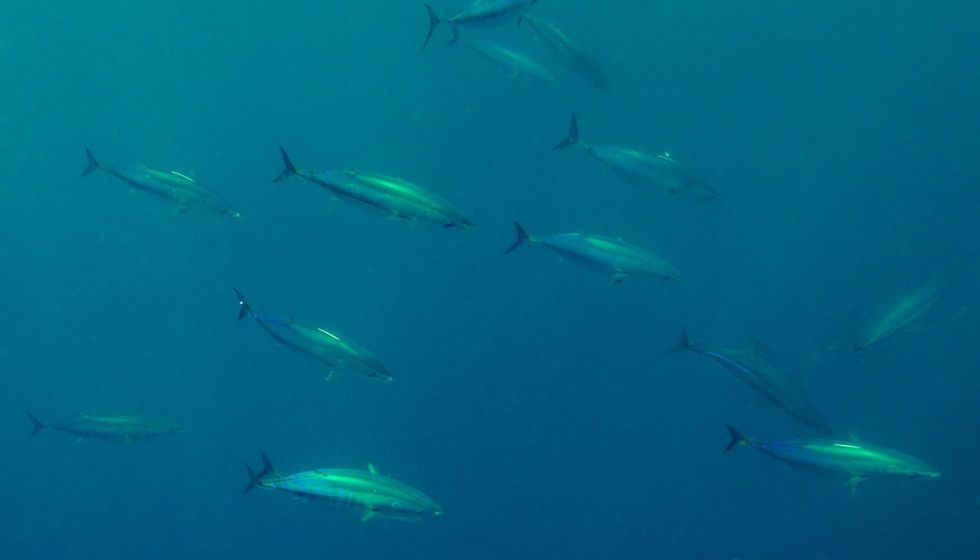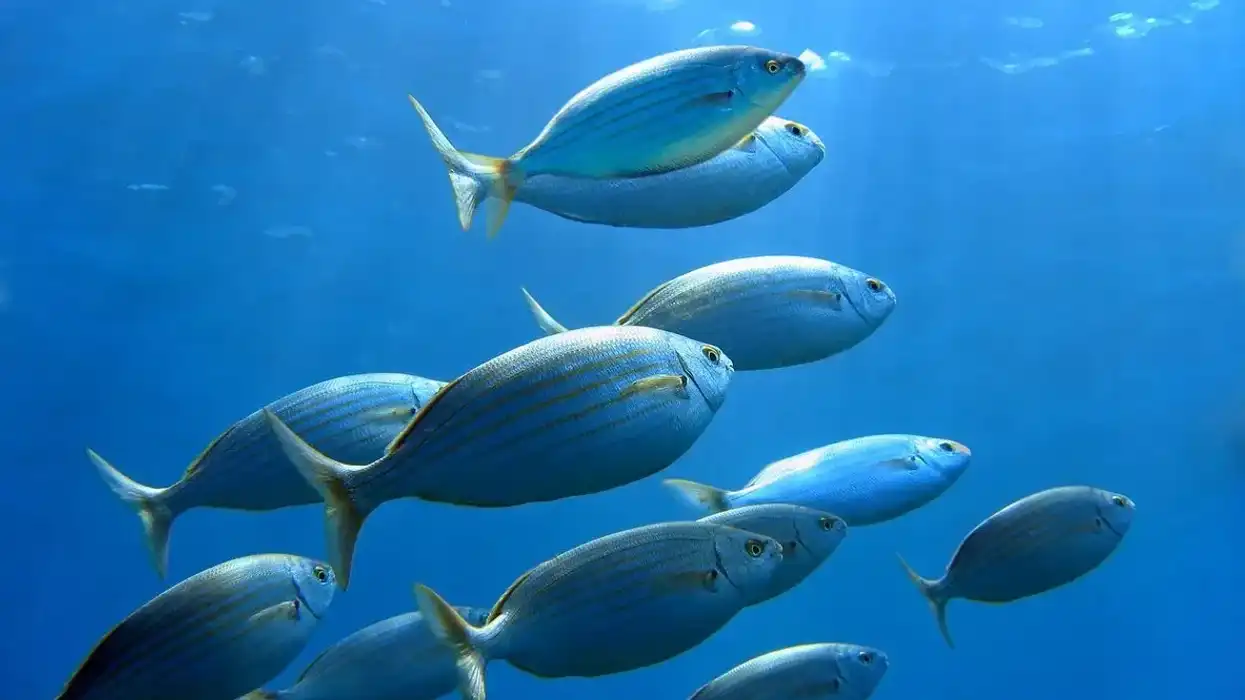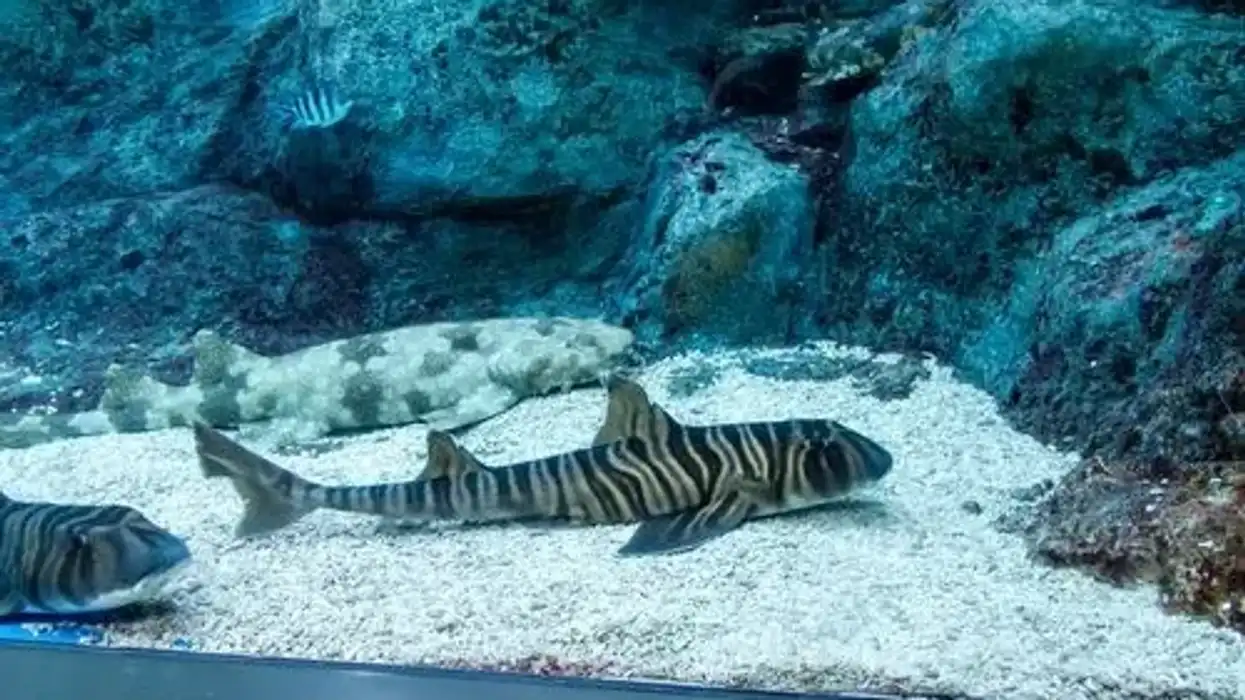The Skipjack Tuna (Katsuwonus pelamis) is caught with pole line in tropical waters but have never been caught in the Black Sea and is seen rarely in the North Sea. Found throughout the Atlantic, Indian, and the Pacific Ocean, this light Tuna is abundant closer to the equator, and they travel long distances.
If you ask what Skipjack Tuna is, you may have known it by its other famous names such as Arctic Bonito, Striped Tuna, Oceanic bonito, Balaya, Tongkol.
There are about 15 species of Tuna in the sea, and you may likely come across four varieties; among them, Atlantic bluefin tuna (Thunnus thynnus) is the largest, weighing up to 1,500 lb. The Indian Ocean Tuna Commission and Western and Central Pacific Fishery are responsible for the Tuna's catch internationally.
This seafood is considered healthy as it is packed with daily value (DV) of protein, omega-3 fatty acids, vitamin B12, and much more.
Read on to really find out what is Skipjack Tuna. If you enjoy reading these fun Skipjack Tuna facts, check out Pirahna fish and Bonito fish.
Skipjack Tuna Interesting Facts
What type of animal is a Skipjack Tuna?
The Skipjack Tuna (Katsuwonus pelamis) is a type of fish from the family Scombridae, which includes other members of the genus Thunnus such as Yellowfin Tuna. This is the smallest variety of all Tuna species caught by pole and line fishing methods.
What class of animal does a Skipjack Tuna belong to?
Skipjack Tuna belongs to the class Actinopterygii. This is an affordable Tuna variety in commercial fishing with the highest fat and most potent flavor.
How many Skipjack Tunas are there in the world?
The world's significant catches show the largest increase from almost nill to 2.2 million tons between 1950 to 2000 respectively; fishing done by using longlines, purse seines, and bait boats. Although there is no exact number to determine how many of them are left, Tunas are believed to be sustainably abundant with healthy populations.
Where does a Skipjack Tuna live?
This Tuna species are found throughout the Atlantic, Indian, and Pacific Oceans' tropical waters with temperatures ranging from 15-30 degrees Celsius.
What is a Skipjack Tuna's habitat?
Skipjack Tuna is often associated with warm and cold water mix with nutrient-rich waters flowing from the ocean's bottom. These tropical waters are considered ideal weather for them to be highly productive.
Who do Skipjack Tunas live with?
Skipjacks live together in large schools; there can be more than 50,000 of them per school sometimes. These large schools often contain a mix of juvenile Bigeye Tuna, Yellowfin Tuna, and whales. Baby Skipjacks typically stay closer to surface waters and go deep as they age.
How long does a Skipjack Tuna live?
The life span of a Skipjack Tuna is 8-12 years.
How do they reproduce?
By the age of one to two years, Tuna reaches reproductive maturity. They spawn throughout the year under good tropical water conditions, with females producing 0.8‑2 million eggs per season depending on the female's body size. These eggs take about a day or two to hatch.
What is their conservation status?
Currently, these species are classified as Least Concern.
However, this resilient fish may slip into a vulnerable state due to extensive commercial fishing. Methods such as purse seine vessels are used to target Skipjacks as they school with bigeye and yellowfin Tuna juveniles.
The demand for this species began in the 1950s, rising to be the biggest worldwide catch today, with Skipjack Tuna accounting for more than half of the Tuna caught as of today; their population also supports this cause as they lay about a million eggs per season.
Skipjack Tuna Fun Facts
What do Skipjack Tunas look like?
SkipJack Tuna is a non-scaly fish except on the lateral line with a streamlined, muscular body and a cone-shaped head. The fish's backside has dark blue-purple color, a silver lower side with four to six dark bands. They are consumed widely for their meaty flavor; their meat is bright red, and the juvenile's meat is light red.

*Please note that this is an image of a Bigeye Tuna, not a Skipjack Tuna specifically. If you have an image of a Skipjack Tuna, then please let us know at hello@kidadl.com.
How ugly are they?
Wild Skipjacks are average-looking fish. This little Tuna species are considered trash fish by many due to their stronger taste than any other species.
How do they communicate?
This schooling predator maintains a social structure sticking together in large groups, called shoals exhibiting collective behavior. It maintains a body temperature that is higher than the water. They go to depths looking for prey; sometimes, they can be cannibalistic, eating their juveniles.
How big is a Skipjack Tuna?
Skipjacks, the smallest among the wild Tuna, can get up to three to four feet. They can get a maximum of up to 34.5 kg in the Atlantic.
How fast can a Skipjack Tuna swim?
This Tuna swims incredibly fast in the ocean, clocking 45-75 mph. They are seen near the surface at night and dive in 850 ft through the day for food. They will be able to change their pectoral and dorsal fins' positions to accelerate the speed in the sea or the ocean-like Atlantic.
How much does a Skipjack Tuna weigh?
Skipjack Tuna can get from 40 lb (18 kg) to a maximum of up to 70 lb (34 kg).
What are their male and female names of the species?
The Tuna has no known special names for their male and female fishes.
What would you call a baby Skipjack Tuna?
The baby Skipjack Tuna is known as a fry.
Do humans eat them?
Tuna is the most popular catch for consumption by humans. Its sustainable population is not in question now as they are plentiful.
It is the smallest and most affordable among the fresh fishery; they are also considered low in mercury as per the FDA. They are extensively used in Japanese cuisine, and in the rest of the world, they are sold fresh, canned, smoked, salted, and cooked in various ways. Kirkland Skipjack Tuna is the most popular brand.
Are they dangerous?
They are not dangerous to humans during the catch or inside a fishery.
Would they make a good pet?
This species is seen in the ocean and is predominantly considered popular seafood, so it is impossible to domesticate them. However, they can be good food for your furry friend.
Did you know...
The purse seine is the most common method of catching these sustainable Tuna populations, and sometimes, the pole line fishing method is also seen. The purse seine is more effective because it sets the net on the ocean's surface without touching the seafloor; thus, this selective method does not harm other marine species.
What is the difference between Skipjack and Albacore Tuna?
Skipjack is widely sold as canned food. There are two varieties of canned Tuna.
In terms of Skipjack Tuna vs Albacore, canned Skipjack is light Tuna with healthy mushy meat, and canned Albacore is chunky; also, the mercury levels in the latter are three times higher than Skipjack. Many people think Skipjack Tuna is better than Albacore due to its low mercury levels.
The Skipjacks are caught by pole line and Albacores by longlines.
Is Skipjack Tuna ok to eat when pregnant?
A general rule is that the older and bigger fish in the ocean are more at risk of mercury contamination. Small children and pregnant women are concerned about mercury's adverse effects from eating seafood.
However, Skipjack has mercury in moderation, and pregnant women are advised against daily consumption, up to three times a month under six portions is considered good inclusion to your diet. Bigeye Tuna and Yellow Fin Tuna can be entirely avoided.
Here at Kidadl, we have carefully created lots of interesting family-friendly animal facts for everyone to discover! Learn more about some other fish including blobfish, or milkfish.
You can even occupy yourself at home by drawing one on our Skipjack tuna coloring pages.










